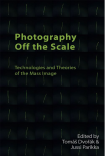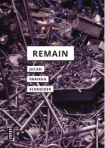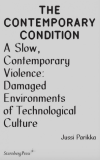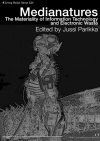Surface Prediction
I am giving a talk in Paris at the École Normale Supérieure and using it as an opportunity to present some new work. This writing stems from some collaborative work with artist Abelardo Gil-Fournier with whom we ran a collective workshop at transmediale on Surface Value . The practice-led workshop was set in the context of our larger discussion on surfaces, media and forms of valuation that pertain both to military and civilian spheres of images (such as aerial imaging) and continuing it in relation to contemporary forms of machine learning and neural networks that take their data from geographical datasets. Hence we are working on this question of prediction as it pertains to geographical and geological surfaces and how these forms of images (from time-lapse to prediction) present a special case for both financial uses of such predictive services and also their experimental angle as forms of moving image – experimental “video” art on a large scale.
Here’s a further excerpt from the talk that also draws on work by Giuliana Bruno, Lisa Parks, Caren Kaplan, Ryan Bishop and many others:
What I want to extract from this research platform that Gil-Fournier’s work offers are some speculative thoughts. At the basis of this is the idea that we can experiment with the correlation of an “imaged” past (the satellite time-lapses) with a machine generated “imaged” future and to test how futures work; how do predicted images compare against the historical datasets and time-lapses and present their own sort of a video of temporal landscapes meant to run just a bit ahead of its time. Naturally would easily risk naturalising things that are radically contingent: mining operations, capital investments, urban growth and financial valuations, geopolitical events, and such. But instead of proposing this as naturalisation, it works to expose some of the techniques through which landscapes are flattened into such a surface of not only inscription of data, but also images in movement. Here, the speculative is not some sort of a radically distinguished practice that stands out as unique aberration but increasingly the modus operandi and the new normal of things (Bratton 2016, 2017). What’s interesting is that it spreads out to a variety of fields: the image becomes a speculative one, with interesting implications how we start to think of video; it is also a financial one, as such data-feed mechanisms are also part of what Cubitt describes as one of the forms of geomedia; and it is about landscapes, as they are part of the longer lineage of how we read them as informational signs.
It’s here that the expanded image of a landscape is also embedded in a machine learning environment which also feed as part of financial environments. There are multiple ways how the ecology of images in machine learning works with time – the form of moving image that is the timelapse is also faced with the temporal image of predictions. The technical basis of digital video becomes one reference point for where to start unfolding the other sides of AI as machine learning: this is post-digital culture also in this sense, where not only images of earth surfaces change in view of the data analytics, but the aesthetic contexts of analysis – namely, moving image and video that feed forward (cf. Hansen).

[Image from Abelardo Gil-Fournier’s workshop materials].
-
June 12, 2018 at 4:20 pmreconstitute the world « Bethany Nowviskie

















